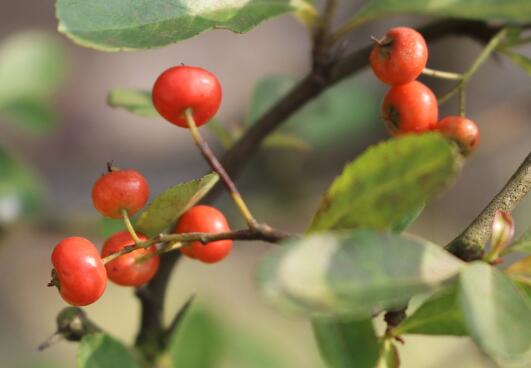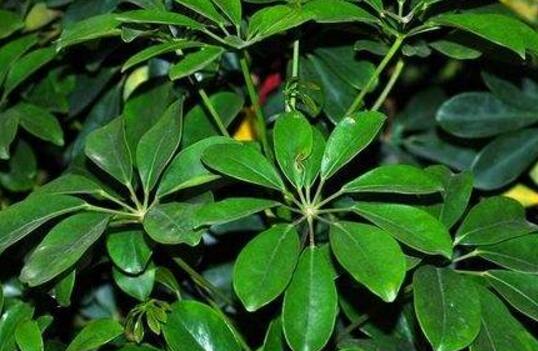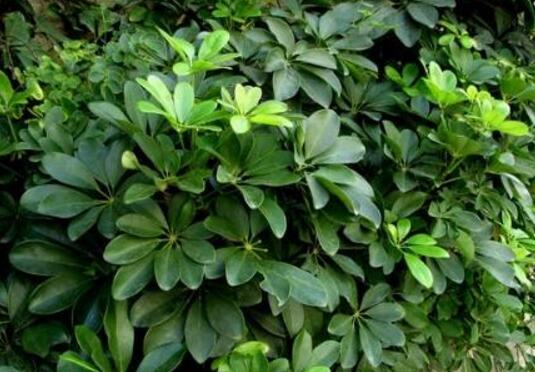How to propagate Hippophae rhamnoides, the method of propagation / sowing propagation / cutting propagation
Hippophae rhamnoides is a very common flower plant in the world, which is highly ornamental, and there are many people who breed it in our country. With more people raising it, people are more concerned about its reproduction. So how do firethorns reproduce? What are the breeding methods of Firethorn? Next, the editor will take you to learn about it.
First, how to propagate Pyracantha

II. Propagation methods of Pyracantha
Sowing and reproduction
1. Seed harvesting
The fruits of Hippophae rhamnoides usually ripen one after another in October to December of each year, and we can harvest them at this time. After harvesting the fruit, we should remove the pulp, then wash and dry the seeds and store them. Wait until the next autumn to sow.
two。 Seed initiation
Before we sow and reproduce Pyracantha, we should first soak the seeds in warm water for 1-2 days, and wait until the seeds begin to absorb water and swell, and then take them out and sow them, so that the seeds of Hippophae rhamnoides can germinate more quickly.
3. Sowing method
Among the breeding methods of Hippophae rhamnoides, sowing and reproduction is a more commonly used method. We need to sow the seeds evenly in the basin soil, and then cover them with soil around 3cm, and then water them. When watering, we should remember to water thoroughly. About 10 days after the delivery of water, the seeds can germinate.
Cuttage propagation
1. Cuttings selection
Before we carry out cutting propagation of Hippophae rhamnoides, we should first choose cuttings (branches). Generally, it is best to choose branches that are robust and disease-free, so that the survival rate will be very high. If we choose branches that look very delicate, then we can basically declare the cutting failure, so we should keep this in mind.
two。 Cutting method
Among the breeding methods of Hippophae rhamnoides, the operation method of cutting propagation is relatively simple. First of all, we can use chopsticks to cut cuttage-sized holes in the soil, and then insert the cuttings into them for watering. Do not water too much, otherwise it is easy to cause stagnant water so that its roots rot. The branches can take root 15-20 days after watering.
Conclusion: after reading the above content, we believe that we also have a certain understanding of how firethorn propagates. After successful reproduction in accordance with the above methods, we will carry out follow-up maintenance of firethorn. If you do not know how to raise, you can refer to the breeding methods of firethorn bonsai, in which there is detailed teaching. Needless to say, the breeding method of Hippophae rhamnoides is introduced here. I hope it can bring some help to you.
Propagation Management of Pyracantha
Generally speaking, we adopt sowing propagation or cutting propagation for the propagation of Pyracantha, but the cutting propagation is simple and successful.
Cutting propagation uses annual healthy branches, cutting cuttings of 15 cm, the lower end is best cut out horseear shape, cutting time can be carried out from November to March, the success rate of cutting is very high, usually can reach more than 90%.
The breeding method of Hippophae rhamnoides, also known as torch fruit, rescue food, originated in China, is an evergreen shrub of Rosaceae. Flowers white, flowering from April to May. The pear fruit is flat ball or nearly round, bright red when ripe, does not fall through winter, is lovable, is the top grade of winter fruit. In addition, Firethorn is a good material for making bonsai. Pyracantha is generally propagated by sowing or cutting. Sowing in the open field or sowing in a shallow flowerpot can be done. When the seeds are ripe, the pulp is removed, washed and sown directly, which can also be carried out in late March of the following year. After sowing, cover the soil, water thoroughly, keep moist, and seedlings can emerge in 30 to 40 days. It is suitable for cutting in June, when the Jianghuai region has reached the "Meiyu" season, with higher temperature and humidity, which is conducive to the rooting of cuttings. Select the middle and upper branches of the crown with slight Lignification in the same year, cut and grow 10 to 15 centimeters, insert them on the seedbed, pour the seedbed into water after compaction, set up a shed to shade, and spray water to keep the soil moist. It usually takes about 50 days to take root. After rooting, properly increase the light, a small amount of foliar fertilization, can also be cultivated in the pot. Pyracantha is more resistant to barren, light, shade and cold. The north needs to spend the winter in a greenhouse. Hippophae rhamnoides likes to be fertilized, and it is necessary to topdressing during the peak growth period in spring. During the fruit expansion period in autumn, one more phosphorus and potassium fertilizer was applied. Watering should be dry and wet, and should be reduced as appropriate in winter.
- Prev

How to cut duck foot wood, the cutting method / cuttage production is the key point.
Duck foot wood is a kind of fast-growing plant. When raising it, we should not only understand the breeding method of duck foot wood, but also master its breeding skills in order to make the alternation of new and old plants. In the reproduction of duck foot wood, the most common thing is cutting, so how to cut it?
- Next

How to breed duck foot wood, duck foot wood propagation method/sowing cuttings can be
In evergreen shrubs, duck foot wood is one of the most popular varieties, in addition to it is very easy to feed, duck foot wood propagation is also very easy, such as sowing, cutting, layering and so on are very practical. It's simple, but it needs to be done right.
Related
- Fuxing push coffee new agricultural production and marketing class: lack of small-scale processing plants
- Jujube rice field leisure farm deep ploughing Yilan for five years to create a space for organic food and play
- Nongyu Farm-A trial of organic papaya for brave women with advanced technology
- Four points for attention in the prevention and control of diseases and insect pests of edible fungi
- How to add nutrient solution to Edible Fungi
- Is there any good way to control edible fungus mites?
- Open Inoculation Technology of Edible Fungi
- Is there any clever way to use fertilizer for edible fungus in winter?
- What agents are used to kill the pathogens of edible fungi in the mushroom shed?
- Rapid drying of Edible Fungi

